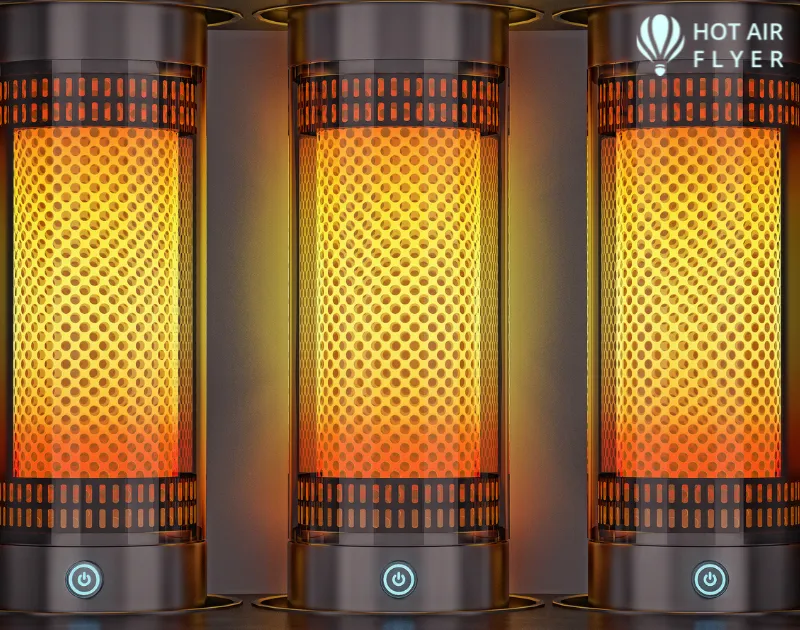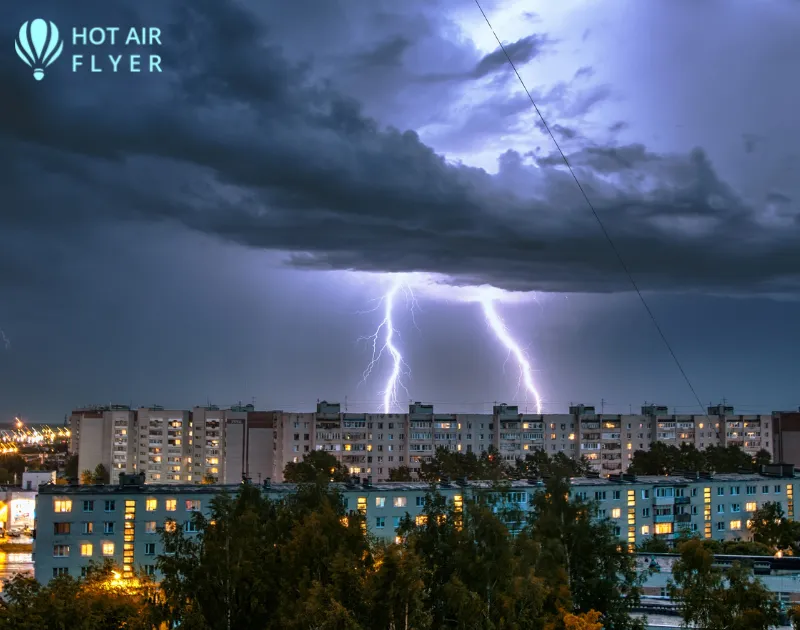Do Hot Air Balloons use Electricity?
Have you ever wondered how one of the oldest forms on travel was affected by the advent of electricity and motors? Well look no further and read below to discover if hot air balloons use electricity.

Do hot air balloons use electricity? No. At least not in the traditional sense that hot air balloons are powered using electricity. Instead, burning fuels are used to lift the balloon, creating lift from heated air as heat rises.
This is a form of convection, circulating heated air inside the balloon which rises as a result of being less dense than the colder air around it.
In the place of electric power, the burner uses a variety of fuels. Most typically this comes in the form of liquid propane and oxygen, which mixes into an incredibly flammable and effective fuel.
It is also cost-effective, and you may recognise propane more as a common fuel source for outdoor cooking, grilling, and barbecues.
Are there other ways in which electricity is used in hot air ballooning?
With such an extensive and global tradition, it’s only natural that some balloon designs may incorporate more modern powers sources or electric assistance. In France, a 2018 start-up company called “FlyDOO Sarl” has incorporated an electric motor into their balloon design.
The design in question is compact, and was made with one to two people in mind and to remove the bulk of classic ballooning. Being only 10 kilawatts, the compact motor and propeller are more than enough to steer and direct the smaller balloon design, removing significant hassle from the balloon experience.
Traditionally steering a hot air balloon is a difficult task that requires some degree of expertise. Relying on wind speed and direction, as well as manipulating the balloon’s altitude to avoid flying off in any random direction the wind current may take you.
FlyDOO designed the compact and motor-driven balloon with the same lightweight design criteria as all hot air balloons should be, perfect for sporting and leisure.
Why don’t all balloons use an electric motor?
The rather simple answer is that traditional balloon designs are perfectly functional. As the saying goes: “If it isn’t broken, don’t fix it.”
Adding additional equipment such as electric motors can be difficult. Factors such as the added weight, power supply, and economic cost in general make motors on larger balloons more impractical.
However, certain hot air balloon designs do use some controlled sources of electricity. This is often done in the form of a spark for the ignition of the propane burners.
In addition, the traditional design of a hot air balloon is already a carefully planned blueprint. From the parachute valve and the heating coil, to the flame-resistant material coating and nylon gores.
Could you lift a balloon with an electric heater?
Alternative fuel sources are always under consideration when it comes to air travel. It is common knowledge how many carbon emissions are generated from international flights, or how the dangers of hydrogen in airships and blimps had to be replaced with helium.

The largest issue facing an electrically powered heater is the power required to lift the balloon. An average hot air balloon burner generates anywhere between two and three megawatts of power.
Alternatives to propane such as some suggestions for solar power simply can’t match this at the present moment in time. However, advancements in alternative and greener energy sources are always being made, so perhaps it is not too far from us in the future.
Not only is electric lift less viable than you may imagine, but propane is perhaps the most effective fuel type for ballooning. Other fuels like petroleum gasoline can not only be less cost-effective, but harmful when burned near a human being.
Safety is an important consideration when it comes to ballooning, especially operating flammable materials and reaching high altitudes. Toxic fumes released from burning and inhaling gasoline can have negative effects on your respiratory health.
Can thunderstorms interfere with ballooning?
Although best avoided as a rule, poor planning or difficulty steering can result in your balloon entering a thunderstorm. Not only can this result in accidents, but it wouldn’t be a fun time to fly.
Thunderstorms produce an outflow, a horizontal and constant stream of air which hot air balloons can’t beat. This makes flying in or even near a thunderstorm pretty miserable, not to mention that it is likely to be accompanied by rain and strong winds.
Another common cause of issue for hot air balloons is power lines, which can get your basket or balloon entangled. Live lines with electricity can not only cause significant danger for the ballooner, but outages for properties connected to the line.
As such, it is important to take care when ballooning. Sudden storms are not unheard-of events, and man-made structures can be just as problematic as mother nature.
I’m Annie, a twenty-something year old girl who loves hot air balloons. So much so, that I have a full time job as a Flight Instructor and it is all I love talking about. Something about being up there in the elevated altitudes helps all my stresses float away!